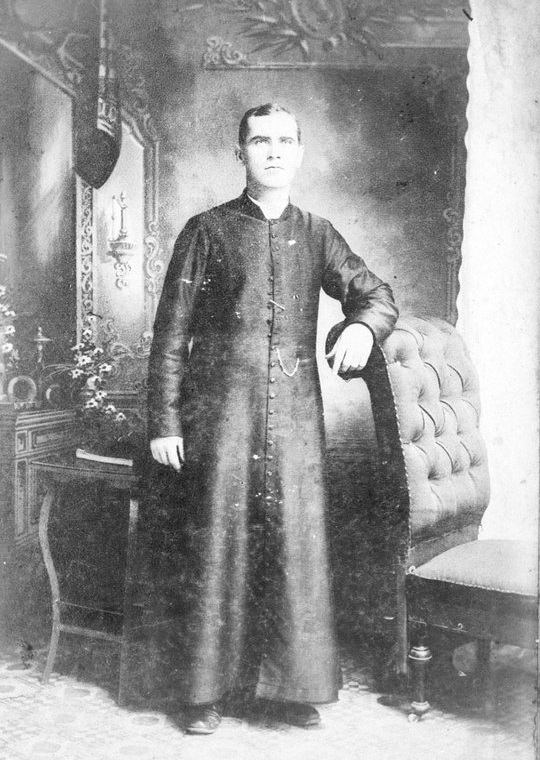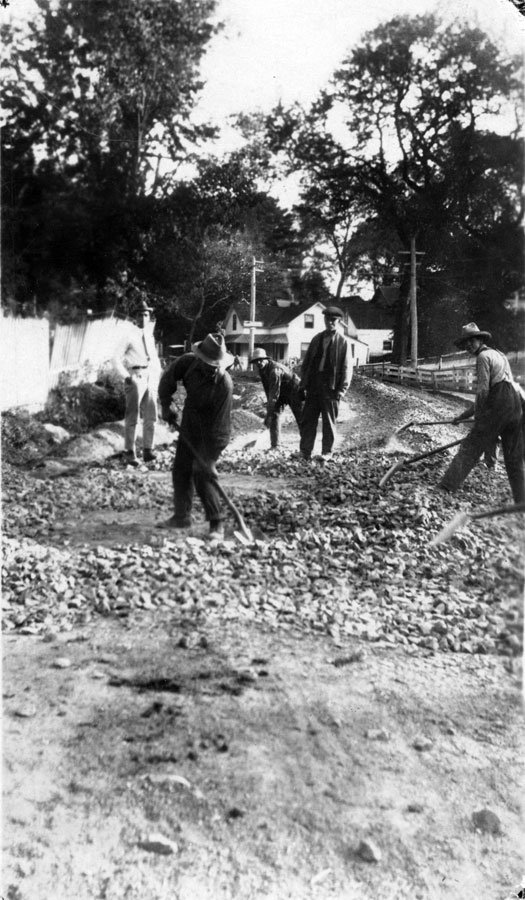Rockland
Founded: 1868
Incorporated: 1908
County: Prescott and Russell
Demonym: “Rocklander” or “Rochelandais”
Rockland is a small bilingual city in Eastern Ontario, located 35 kilometres east of Ottawa, the Canadian capital. It sits on the south shore of the Ottawa River, facing Thurso, Québec. Rockland is located in Prescott-Russell county, whose first inhabitants were American Loyalists. Following them, French Canadians from Lower-Canada (today the province of Québec) settled in the area, as land in their hometowns was becoming more and more difficult to find. These French Canadians established the villages of Hawkesbury, Clarence Point, Clarence Creek and Cumberland.
Rockland’s founding in 1868 coincided with the establishment of a sawmill at McCaul point by William Cameron Edwards – a family name Rocklanders will recognize, as it’s also the name of one of the town’s oldest streets. Edwards bought the land that year and built the mill with two of his employees. The village of Rockland grew around the mill and its population soon reached 350 residents. Edwards personally gave Rockland its name, basing it on the rocky landscape he saw around him. He was also its first postman.
W.C. Edwards
William Cameron Edwards (1844-1921) was born in Clarence Creek and began working in the timber industry in Thurso at a young age. He started W.C. Edwards & Company, which built several sawmills in Ottawa and its surrounding areas. Edwards was also a politician. A member of the liberal party, he was an MP (Member of Parliament) from 1887 to 1900. In 1903, he was appointed to the Senate, which he served until his death. A commemorative plaque is located at the site of the Rockland sawmill complex at Parc du Moulin on Edwards Street.
Interesting fact: Edwards once owned the residence at 24 Sussex Drive (now the official residence of the Prime Minister of Canada), and his nephew Cameron Macpherson Edwards once owned a home that is now the country retreat of the Prime Minister.
Edwards hired many French Canadians. These men would chop down the trees of the surrounding forests (Edwards had exclusive timber rights to the area), and drag them to the river, where they floated down to the sawmill. The employees lived in dormitory-style housing near the sawmill. In the winter, they lived in the woodyard in the forest.
Rockland’s population increased as people moved to the area to work in the sawmill, along with their families. Many workers built houses near the mill, on Woods Street. Edwards also built 150 houses, which he rented to families for $4 per month (see photo below). In order to see to the families’ food, clothes and tools needs, the W.C. Edwards General Store was opened (on the site of today’s Chamberland Garage at the corner of Laurier and Edwards). Employees could only pay for goods using company-issued tokens (pictured at left). In 1875, a fire destroyed the Edwards sawmill, but it was quickly rebuilt.
Small homes built for the Edwards mill workers
Eventually, families began to construct their houses further east along Main Street (today called Laurier). Thus, two sections were formed: Rockland-West and Rockland-East. From 1875 to 1895, the west side of Main became the centre of town. All stores and services were located there, including the elementary school, the Ste-Trinité Catholic church, businesses and the town hall. In Rockland East were houses, the cemetery and the veterinary’s office.
Paroisse Sainte-Trinité
Initially, Rockland was considered too small to have its own church. The village became a mission of the parish of Sainte-Félicité in Clarence Creek. The devout had to make their way there to attend services – a difficult 8-kilometre journey at the time. In 1887, a wooden church called Sainte-Trinité was finally built in Rockland. Two years later, the village got their first resident priest, Pierre-Siméon Hudon (pictured at right), who remained there for 45 years.
Hudon established the first catholic school, l’Académie du Sacré-Coeur, in 1890. Hudon attempted to make school mandatory, but many families objected, as their children were already working at the sawmills. The Academy eventually shut down in 1952. In 1899, the village church was destroyed by fire. Reconstruction took two years. In 1916, yet another fire destroyed the church (pictured at right). It was rebuilt on top of the former church’s ruins.
Main Street in “Rockland-West”during Wilfrid Laurier’s 1900 visit. The street was later renamed Laurier in his honour. W.C. Edwards’ farm exhibition hall is seen on the left.
Taros vs. Pitons
Rockland-East soon had a nickname: the “Taro”. Its origins are uncertain, but some believe the name derived from “taraud”, the popular name given to a metal nut. Others believe it could derive from the French pronunciation of the English “tar road”. Folks living in Rockland-West used the word Taro to insult those living in Rockland-East. Not to be outdone, folks in Rockland-East called those living in Rockland-West the “pitons”, referring to the tokens that the sawmill company used to pay its employees.
In 1888, the Grand Trunk railroad was built for the transportation of wood and merchandise, increasing the town’s population considerably. The station was located at St-Jean Street, at the corner of today’s Raymond St. The train stopped there once a day.
Undated photo of a public school in Rockland
In the early 1900s, additional primary schools were opened: l’École du cimetière, l’École Sainte-Famille and l’École Saint-Joseph. All these schools were eventually shut down and all children were sent to the new, larger École Sainte-Trinité which opened in 1952. The first high school opened in 1906, and it too was eventually shut down in favour of a new, larger building (called L’Escale, which opened as a bilingual school in 1961). The building housing the first high school is Rockland’s present-day City Hall.
In 1908, a Canadian Northern railroad linking Montréal to Ottawa gave the population yet another boost. This rail line followed the route of today’s Highway 17/174. The company built its station just to the west of Edwards St. A few years later, in 1915, electricity became available in Rockland. It was first implemented at the mill and the home of W.C. Edwards, and then in some public buildings, private homes and streetlights. During the first few years of electricity, it would be cut off at 11 pm nightly.
Men working at the mill in 1906. Pictured in this photo are Joseph Louisseize (4th from the left) and Gédéon Louisseize (6th from the left).
Street paving in 1922. Laurier Street between St-Louis Street and the public school was the first to be paved.
Life still revolved around the Edwards mill. At its peak, it employed over 1000 people. A second mill, nicknamed “le petit moulin”, was opened at the end of Woods Street. Around 1918, Edwards sold his business. We can’t be sure if he did so because of failing health (he died two years later), or because of his duties as a senator. Soon after the sale, the “petit moulin” was also destroyed by fire.
The new owners of the mill closed it down in 1928 due to the economic downturn that followed the First World War. Many residents moved to Hull and Gatineau to find work in the mills there. Ten years after the mill’s closure, the train service was discontinued.
After the Second World War, the population began to increase again. The number of residents grew steadily until about the year 2000, when the population increased rapidly due to the growth of nearby Ottawa.
Today, Rockland has a number of schools, retail outlets, restaurants and many sports facilities. (I still remember being excited about the very first fast food restaurant (Subway) that came to town when I was in high school.) Needless to say, Rockland is hardly recognizable today from what it was just 20 years ago.
Interested in learning more about Rockland’s history? Visit the The Clarence-Rockland Museum at 687 Laurier Street in Rockland. Learn more at http://www.clarence-rockland.com/index.php/en/museum or https://www.facebook.com/musee.cr.museum/.
If you’re in Rockland, this self-guided walking tour will take you through various points of interest: https://baladodiscovery.com/circuits/780/histoire-de-rockland.
Log driver André Duval in 1955
Rockland Today: Statistics Based on the 2011 Census
Land area: 8.07 km2
Population: 11,099 (51% female, 49% male)
Median age of population: 40.3
Average number of children per census family: 1.0
French as a mother tongue: 64.7%
English as a mother tongue: 32.2%
Image Gallery
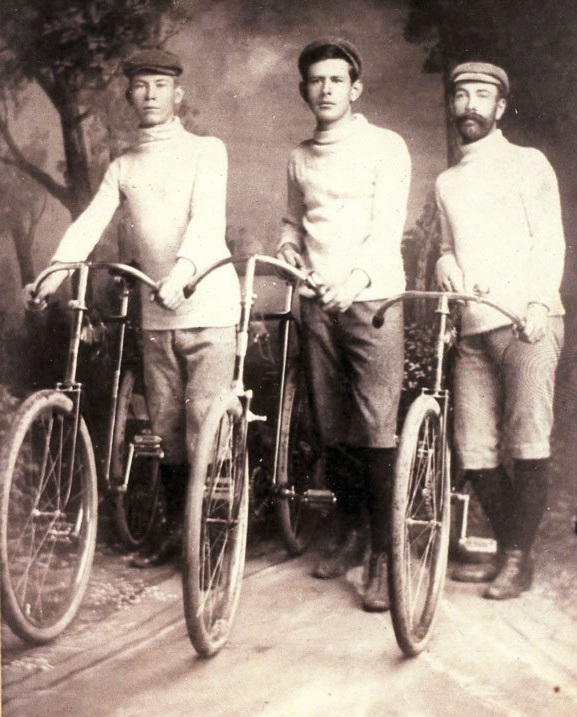
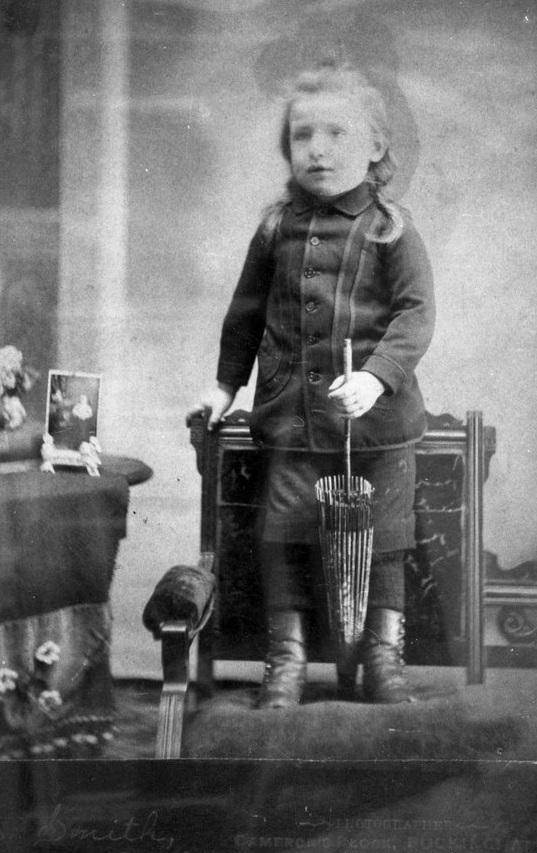
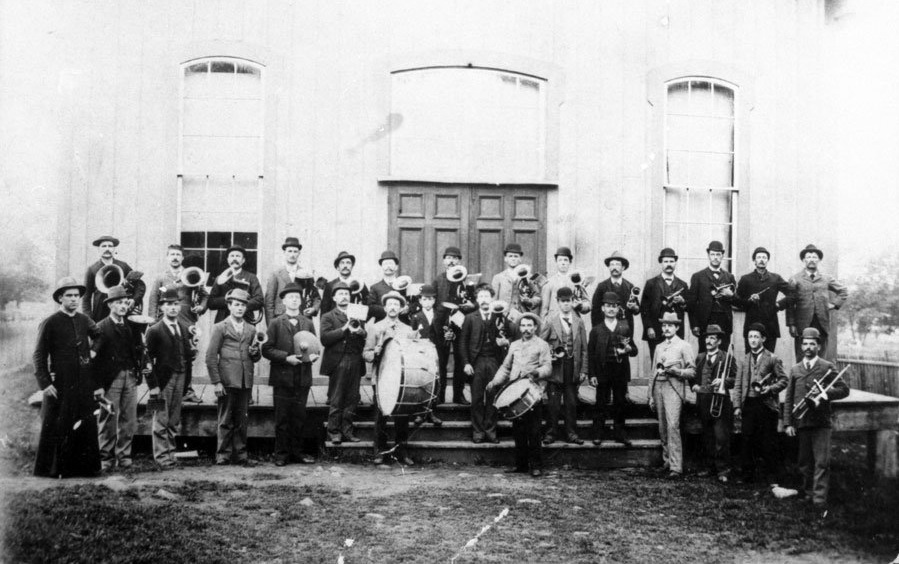
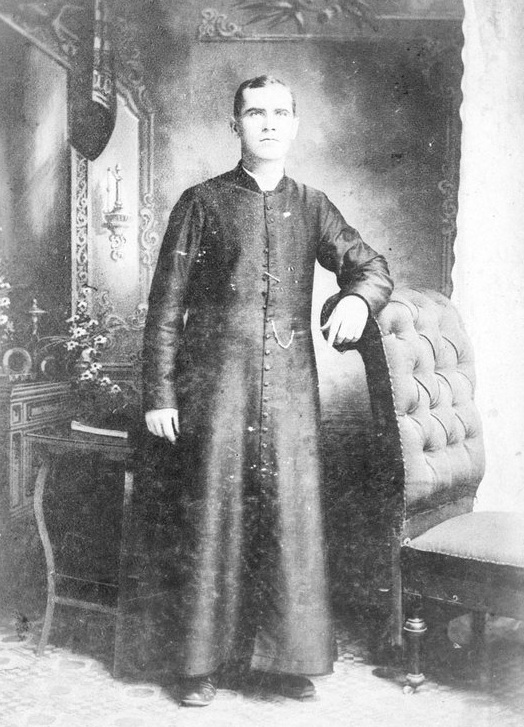
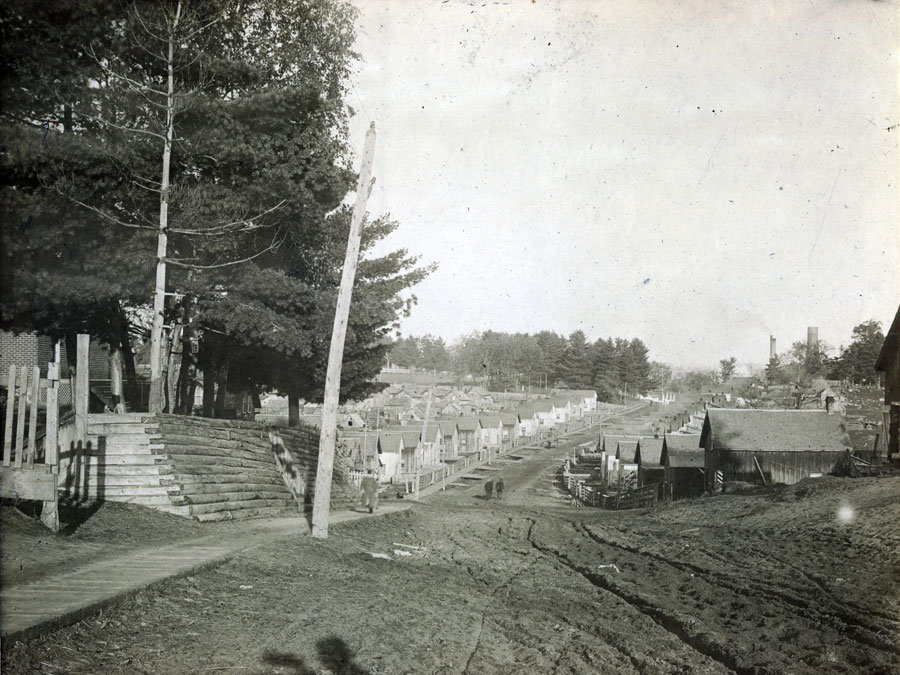

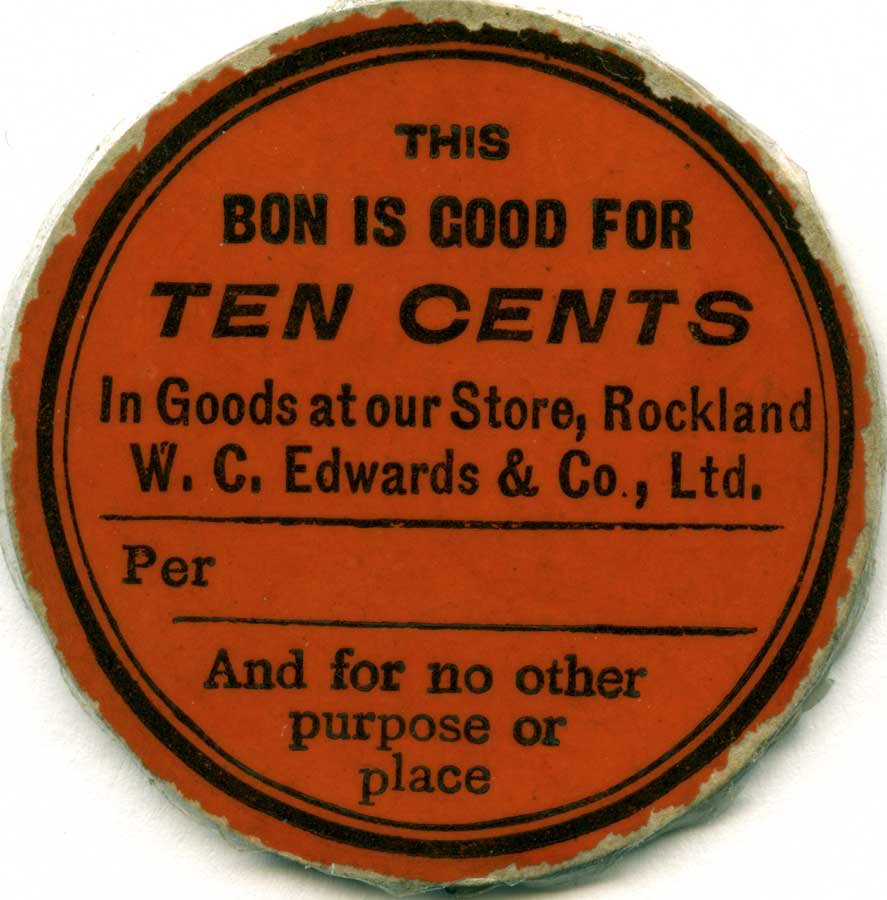
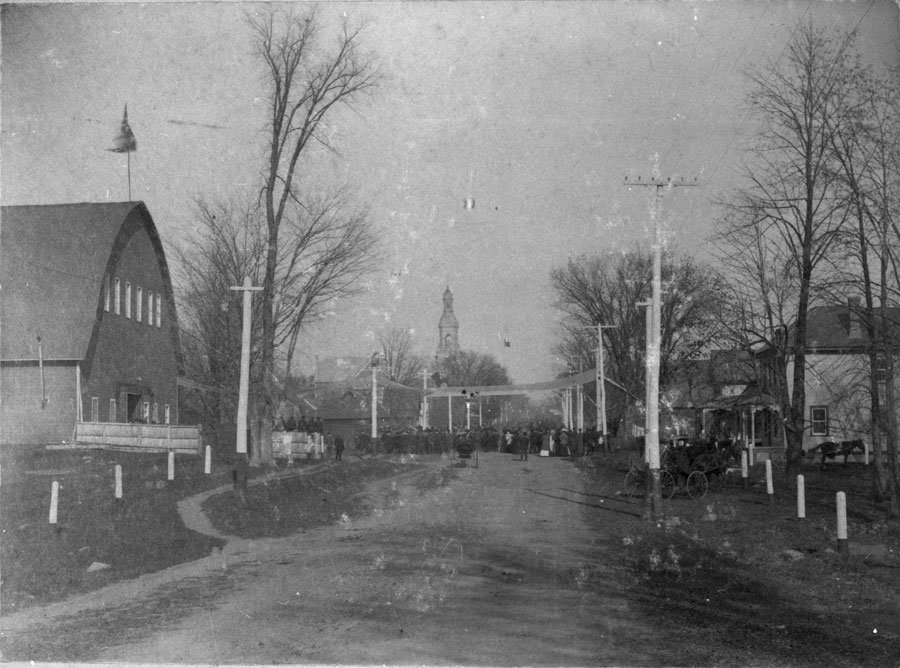
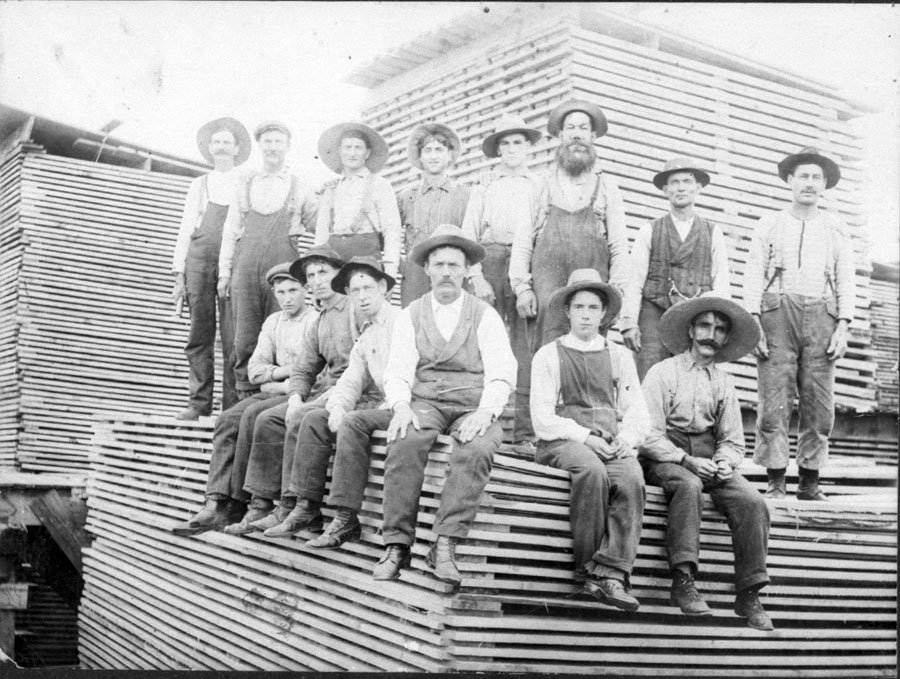
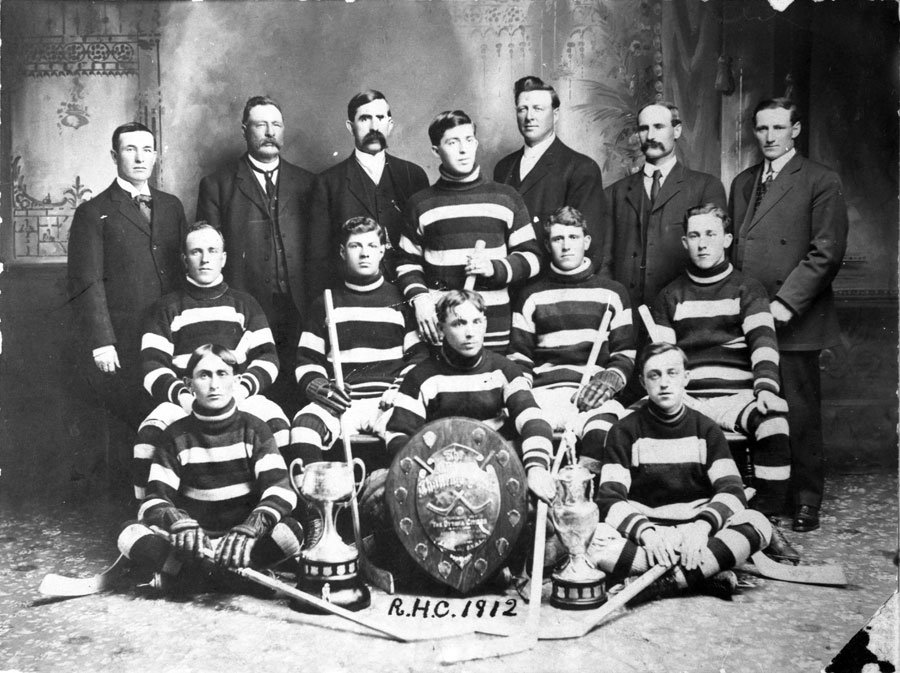
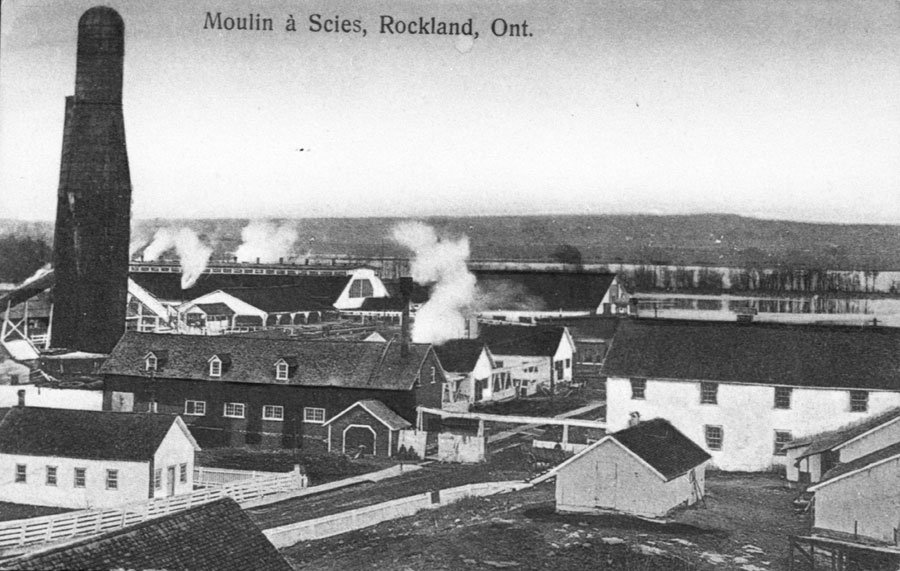
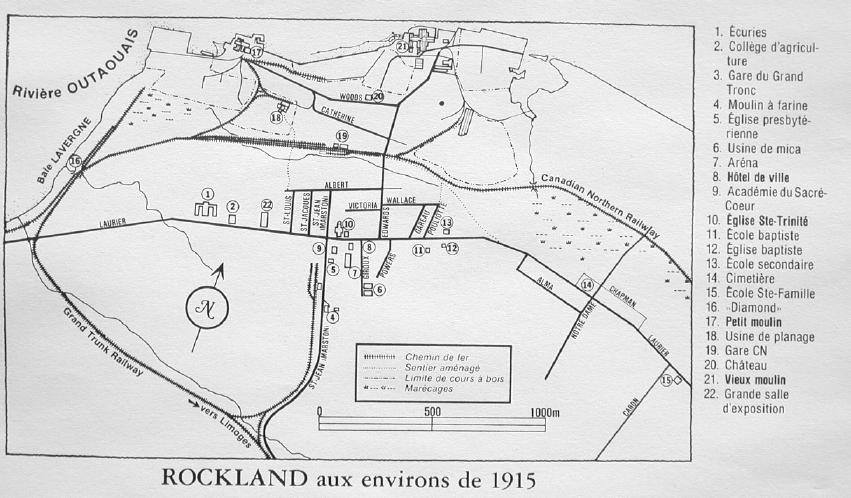
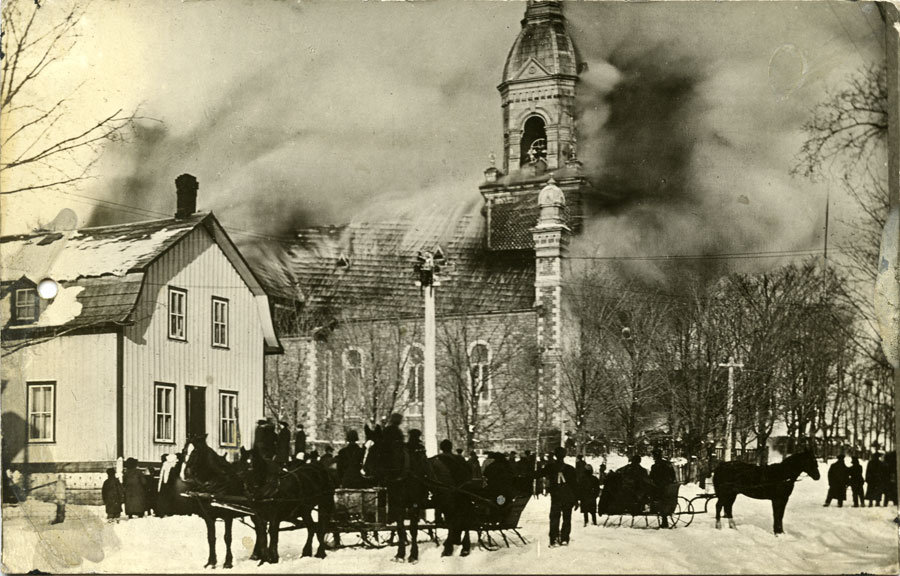
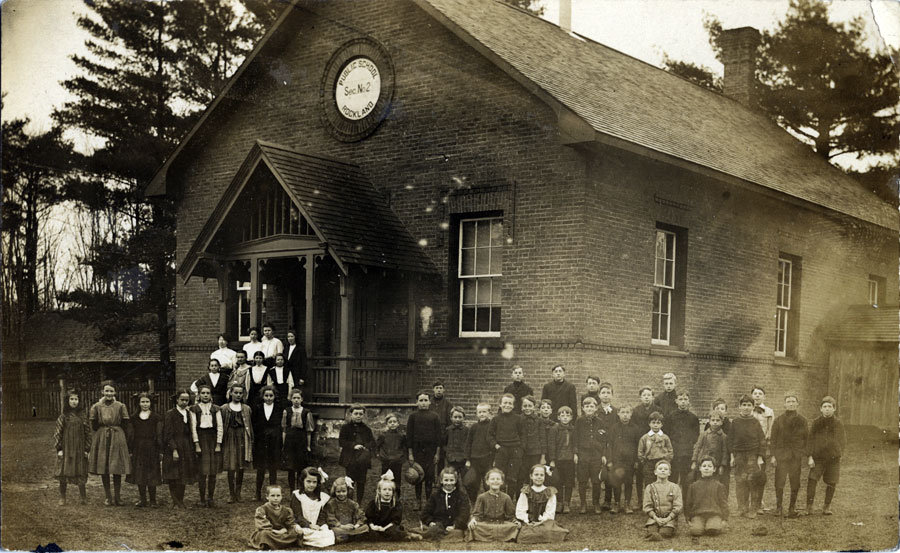
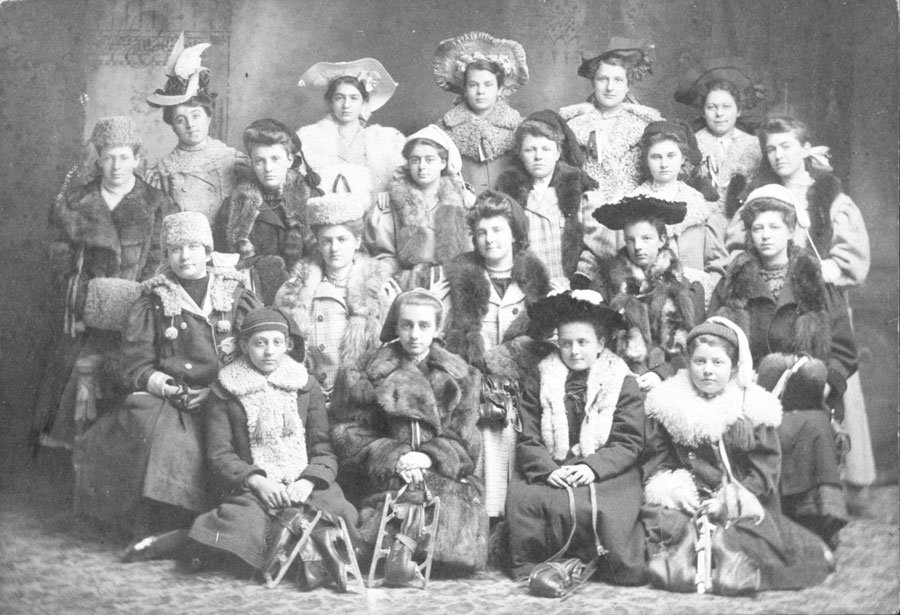
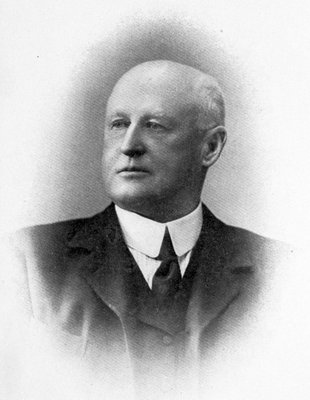
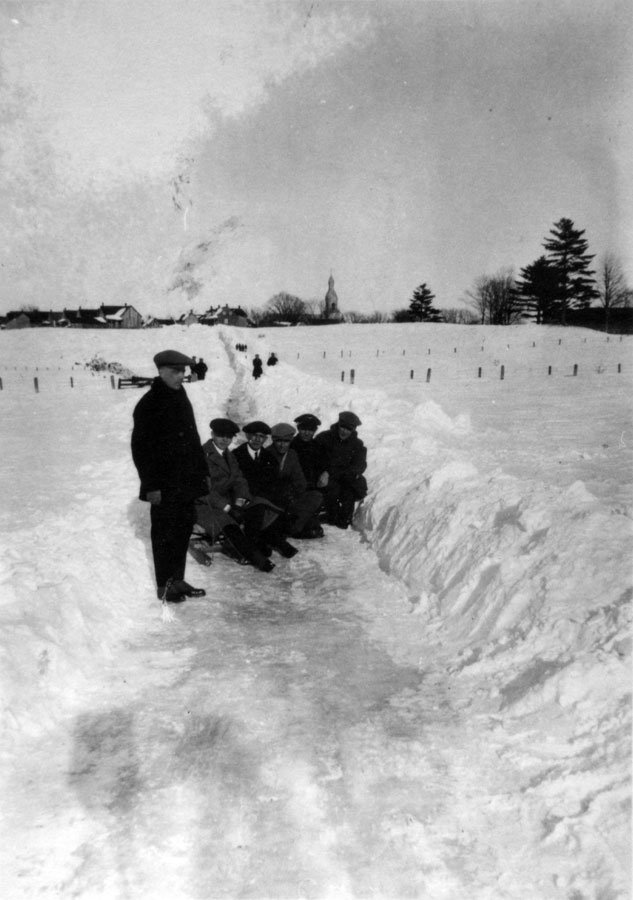
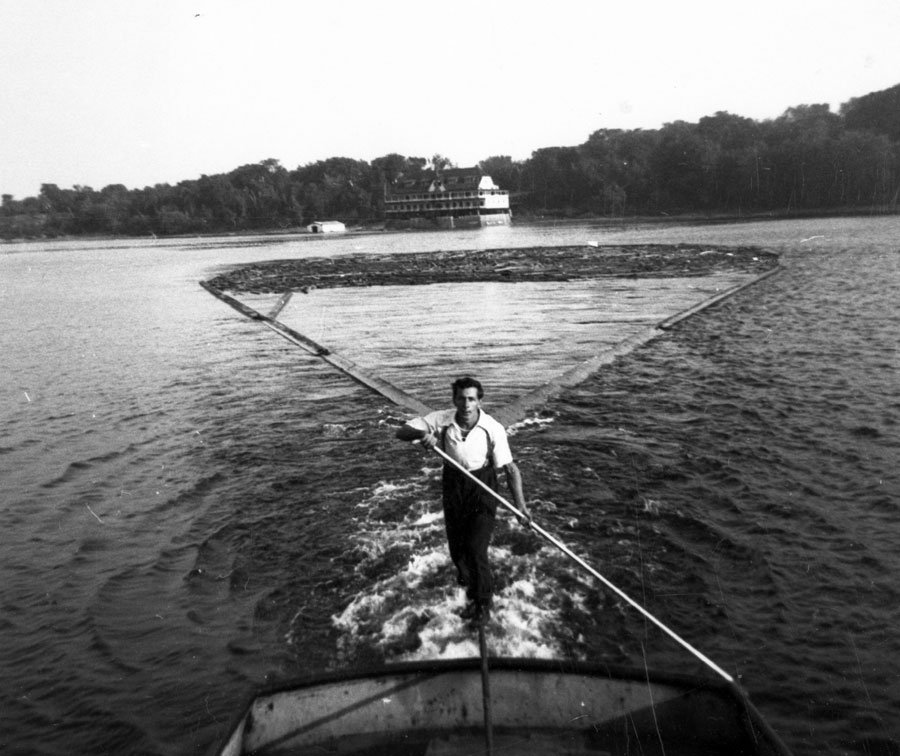
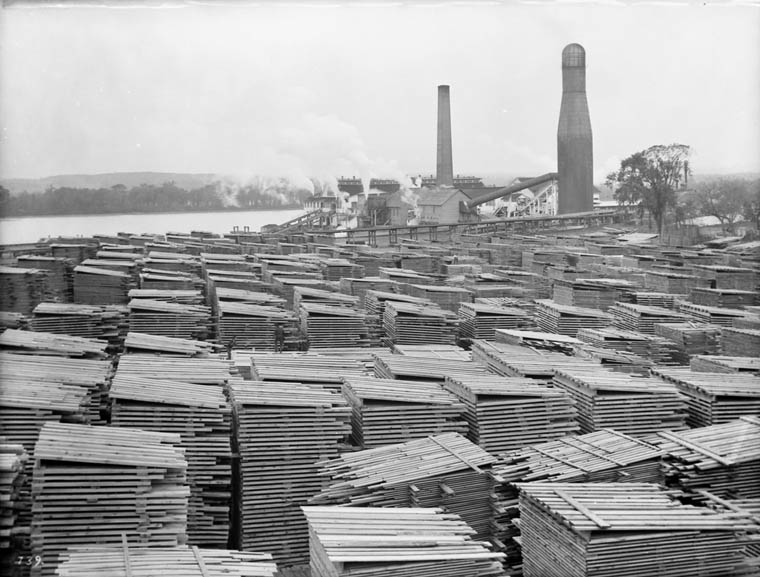
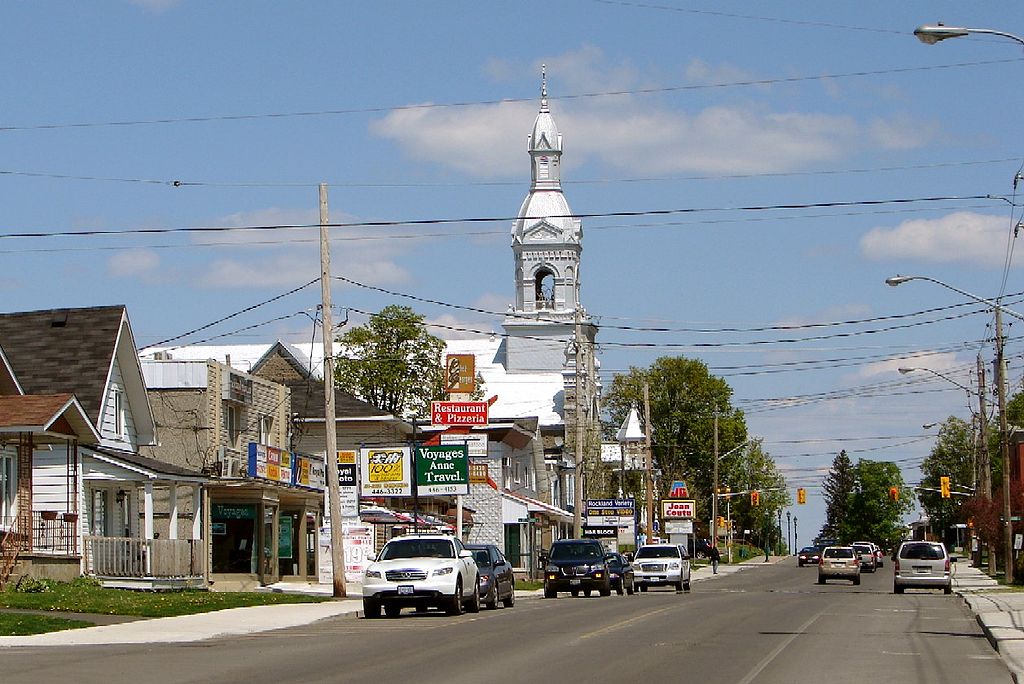
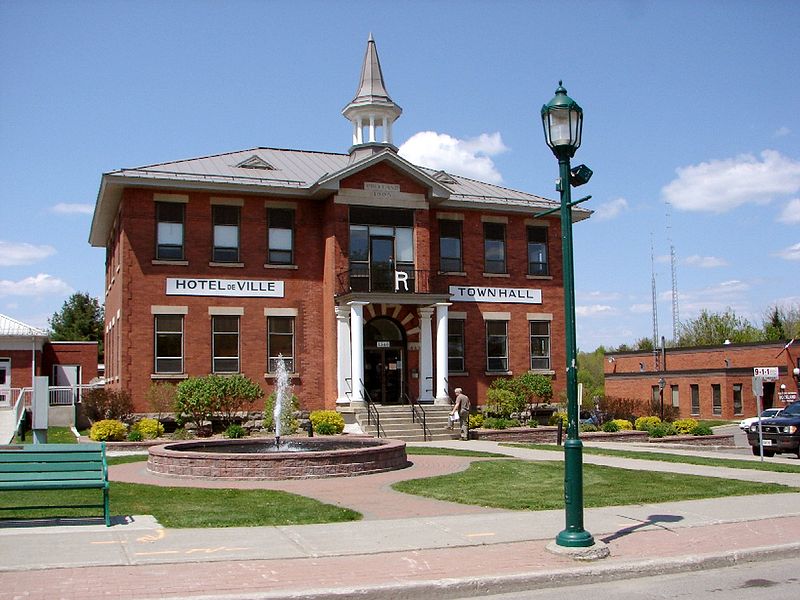
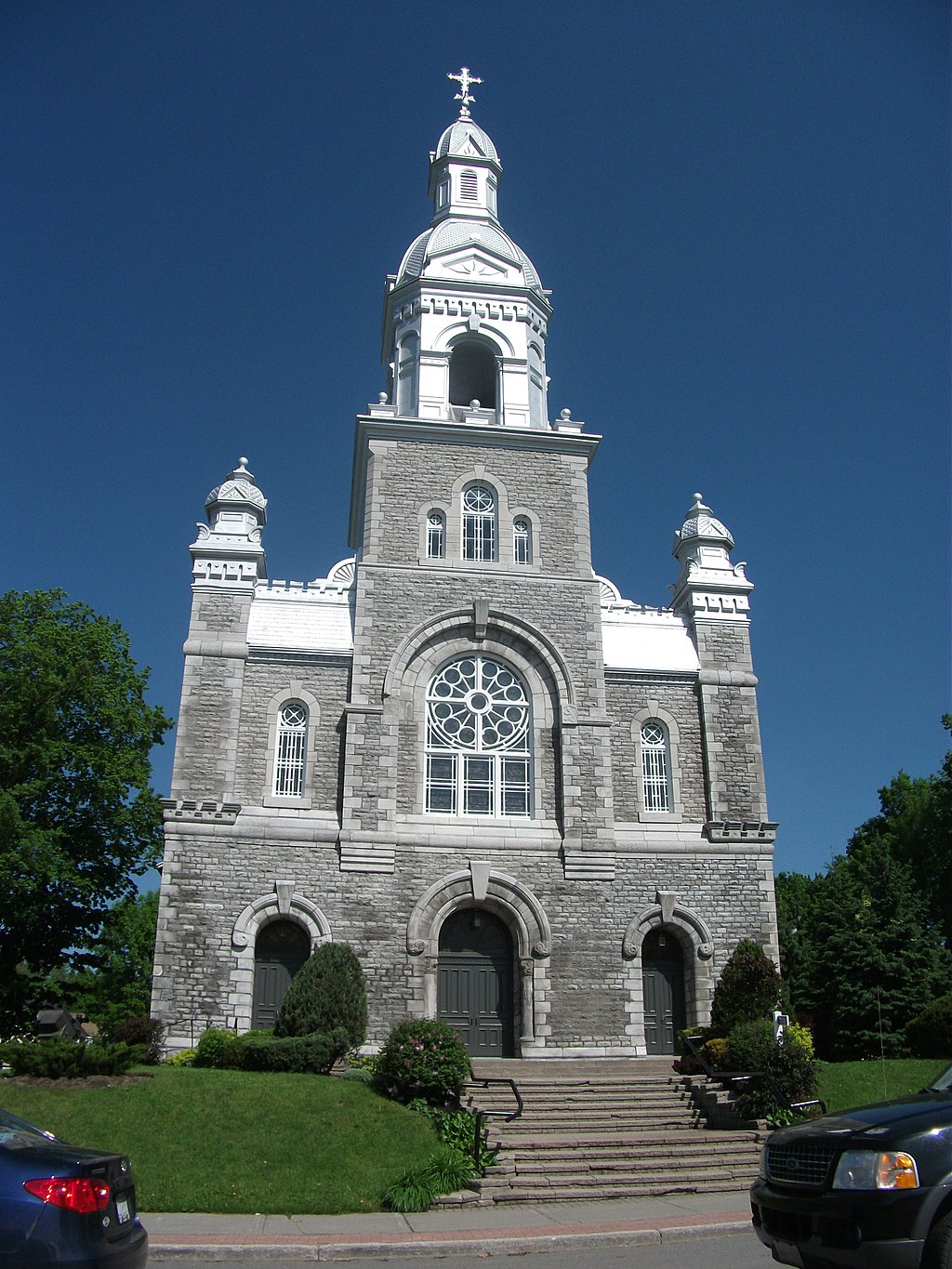
Want to start researching your own family roots? Contact us today!
Enjoying our articles and resources? Consider showing your support by making a donation. Every contribution, no matter how small, helps us pay for website hosting and allows us to create more content relating to French-Canadian genealogy and history. Thank you!
Sources:
Statistics Canada. 2012. Rockland, Ontario (Code 0719) and Ontario (Code 35) (table). Census Profile. 2011 Census. Statistics Canada Catalogue no. 98-316-XWE. Ottawa. Released October 24, 2012 (http://www12.statcan.gc.ca/census-recensement/2011/dp-pd/prof/index.cfm?Lang=E : accessed 5 Feb 2019).
“William Cameron Edwards 1844-1921”, Ontario Heritage Trust, Online Plaque Guide for William Cameron Edwards (https://www.heritagetrust.on.ca/en/plaques/william-cameron-edwards-1844-1921 : accessed 5 Feb 2019).
“Wood Mill Ruins Rockland”, Capital Gems (http://www.capitalgems.ca/wood-mill-ruins-rockland.html : accessed 5 Feb 2019).
“History”, Cité Clarence-Rockland (http://www.clarence-rockland.com/index.php/en/visitors/history : accessed 5 Feb 2019).
Welch, Deborah, and Michael Payne, "Clarence-Rockland". Canadian Encyclopedia. Historica Canada. Article published 18 Oct 2012; last modified 8 Aug 2016 (https://www.thecanadianencyclopedia.ca/en/article/clarence-rockland : accessed 5 Feb 2019).
“The Hon. William Cameron Edwards”, Parliament of Canada (https://lop.parl.ca/sites/ParlInfo/default/en_CA/People/Profile?personId=15237 : accessed 5 Feb 2019).
Daniel Marchildon, Rockland: Toute une Histoire! (Centre franco-ontarien de ressources en alphabétisation, 1991), 51 pages.
Photos:
“Moulin à scies Edwards”, digital image of a 1914 photo by E. Paul donated by John Conningham, Digital Prescott Russell en Numérique (http://images.ourontario.ca/PrescottRussell/103476/data?n=44 : accessed 5 Feb 2019).
"William Cameron Edwards, Fondateur de Rockland en 1868", digital image of a 1919 photo (photographer unknown), Bibliothèque Publique de Clarence-Rockland, Digital Prescott Russell en Numérique (http://images.ourontario.ca/PrescottRussell/103218/data : accessed 5 Feb 2019).
“Papier monnaie dont se servait W.C. Edwards pour payer ses employés”, digital image of a circa 1900 photo (photographer unknown) donated by Thomas Girard, Digital Prescott Russell en Numérique (http://images.ourontario.ca/PrescottRussell/1710113/data?n=108 : accessed 5 Feb 2019).
"Rue de Rockland”, digital image of a photo given by John Murray, Bibliothèque Publique de Clarence-Rockland, Digital Prescott Russell en Numérique (http://images.ourontario.ca/PrescottRussell/2287939/data?n=5 : consulté le 6 fév 2019).
“Pierre-Siméon Hudon (1861-1934) curé de Rockland de 1889 à 1934”, digital image of an 1894 photo by E. Paul donated by Irène Lafontaine, Bibliothèque Publique de Clarence-Rockland, Digital Prescott Russell en Numérique (http://images.ourontario.ca/PrescottRussell/103563/data?n=10 : accessed 5 Feb 2019).
"Rue Main (maintenant Laurier) lors de la visite de Wilfrid Laurier à Rockland", digital image of a 1900 photo by E. Paul, Bibliothèque Publique de Clarence-Rockland, Digital Prescott Russell en Numérique (http://images.ourontario.ca/PrescottRussell/103329/data?n=6 : accessed 5 Feb 2019).
"École public [sic]", digital image of postcard (unknown photographer), Bibliothèque Publique de Clarence-Rockland, Digital Prescott Russell en Numérique (http://images.ourontario.ca/PrescottRussell/2288310/data?n=7 : accessed 5 Feb 2019).
“Hommes travaillants au transport et à l'étalage de la planche au moulin W. C. Edwards”, digital image of a 1906 photo (photographer unknown) donated by Alice Quesnel, Digital Prescott Russell en Numérique (http://images.ourontario.ca/PrescottRussell/103576/data?n=314 : accessed 5 Feb 2019).
“Trois hommes en vélo”, digital image of a c. 1890 photo by E. Paul donated by John Murray Dent, Digital Prescott Russell en Numérique (http://images.ourontario.ca/PrescottRussell/2288773/data?n=39 : accessed 5 Feb 2019).
“Onésime Charron”, digital image of an 1892 photo by E. Smith donated by Fernand Laporte, Digital Prescott Russell en Numérique (http://images.ourontario.ca/PrescottRussell/103435/data?n=78 : accessed 5 Feb 2019).
"Première Fanfare de Rockland devant l’hôtel de ville", digital image of an 1893 photo (photographer unknown) donated by Roland Lavigne, Bibliothèque Publique de Clarence-Rockland, Digital Prescott Russell en Numérique (http://images.ourontario.ca/PrescottRussell/103146/data?n=26 : accessed 5 Feb 2019).
“Le pavage de la route”, digital image of a 1922 photo (photographer unknown) donated by John Murray Dent, Digital Prescott Russell en Numérique (http://images.ourontario.ca/PrescottRussell/2287917/data?n=325 : accessed 5 Feb 2019).
"Stewart's Quarry", digital image of a 1898 photograph (author unknown), Library and Archives Canada (http://collectionscanada.gc.ca : accessed 16 Oct 2018)
"Club de hockey de Rockland", digital image of a 1912 photo (photographer unknown) donated by Roland Dion, Bibliothèque Publique de Clarence-Rockland, Digital Prescott Russell en Numérique (http://images.ourontario.ca/PrescottRussell/103643/data?n=23 : accessed 5 Feb 2019).
“L’église de Rockland en feu”, digital image of a 1916 photo (photographer unknown) donated by John Murray Dent, Digital Prescott Russell en Numérique (http://images.ourontario.ca/PrescottRussell/2288011/data?n=31 : accessed 5 Feb 2019).
“Groupe de patineuses”, digital image of a 1916 photo by E. Paul donated by Fernand Laporte, Digital Prescott Russell en Numérique (http://images.ourontario.ca/PrescottRussell/103395/data?n=43 : accessed 5 Feb 2019).
“La grande glissoire”, digital image of a circa 1935 photo (photographer unknown) donated by Gérald Beauchamp, Digital Prescott Russell en Numérique (http://images.ourontario.ca/PrescottRussell/1711272/data?n=336 : accessed 5 Feb 2019).
“André Duval regagnant le remorqueur après avoir vérifier les billots”, digital image of a 1955 photo (photographer unknown) donated by Alphée Payer, Digital Prescott Russell en Numérique (http://images.ourontario.ca/PrescottRussell/2261555/data?n=318 : accessed 5 Feb 2019). Après avoir vérifier les billots ( faire le tour du boom)il fallait marcher sur le cable de liaiason jusqu'au remorqueur.
“La cour à bois où les piles pouvaient s'élever jusqu'à 25 pieds”, digital image of a c. 1900 photo (photographer unknown) donated by Thomas Girard, Digital Prescott Russell en Numérique (http://images.ourontario.ca/PrescottRussell/124811/data?n=29 : accessed 5 Feb 2019).
“Rockland (part of City of Clarence-Rockland), Ontario, Canada”, digital image of a May 2009 photo by Wikipedia Commons Author P199, Wikipedia Commons (https://commons.wikimedia.org/wiki/File:Rockland_ON.JPG : accessed 5 Feb 2019)
“Town hall of Rockland (City of Clarence-Rockland), Ontario, Canada”, digital image of a May 2009 photo by Wikipedia Commons Author P199, Wikipedia Commons (https://commons.wikimedia.org/wiki/File:Rockland_town_hall.JPG : accessed 5 Feb 2019)
“A Church in Rockland, Ontario”, digital image of a May 2011 photo by Wikipedia Commons Author Doug Kerr, Wikipedia Commons (https://commons.wikimedia.org/wiki/File:A_Church_in_Rockland,_Ontario.jpg : accessed 5 Feb 2019)




